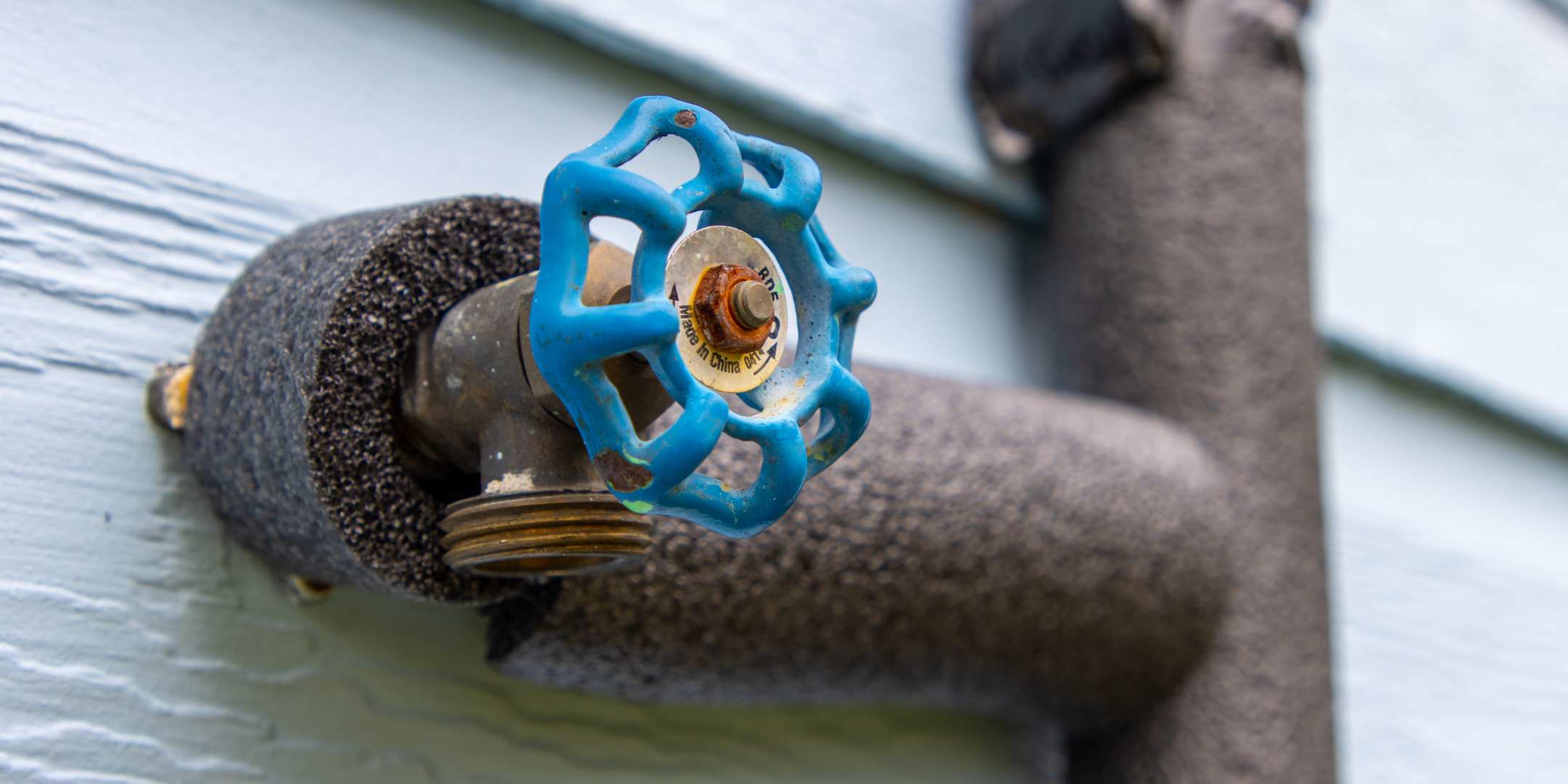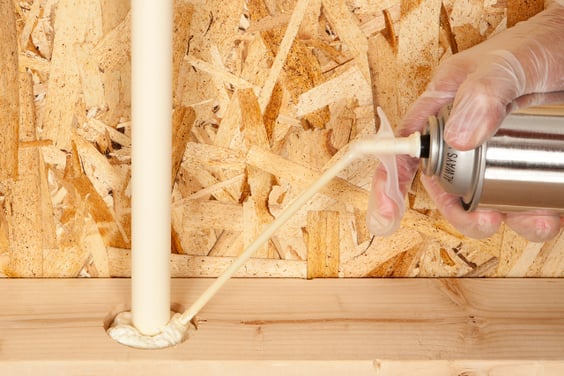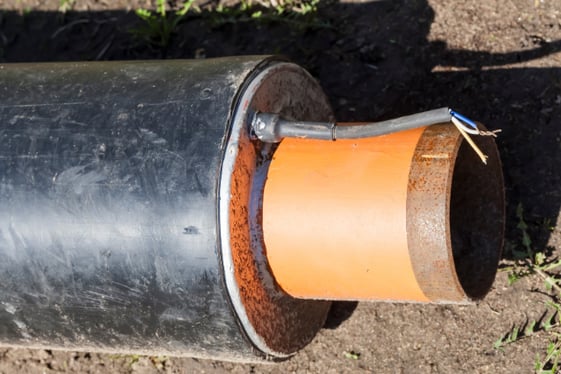The Pros and Cons of the Top 5 Best Home Pipe Insulation Options
September 3rd, 2024
5 min read
By Daphne Hunt

Choosing the right pipe insulation material depends on several factors, including the temperature, location, type of pipe, and your specific goals for insulation. Are you aiming for a more energy-efficient home, or is your primary concern preventing pipes from freezing? At A&E Plumbing, Heating, and Air, with over 16 years of experience, we’ve seen it all.
Generally, materials like fiberglass or mineral wool are optimal for pipes exposed to high temperatures, while foam and rubber work well for cold water pipes and can also be used on hot pipes.
To help you make the best choice for your home, we’ll walk you through the five most popular pipe insulation materials. We’ll explain how each is used and where it works best, so you can confidently choose the insulation that fits your unique needs and budget.
1. Fiberglass Insulation Pros and Cons

Fiberglass insulation is a top choice for insulating pipes, particularly in high-temperature environments like hot water systems. Made from woven glass strands, it offers excellent thermal resistance, making it highly effective in preserving heat and minimizing energy loss in hot water pipes, especially copper ones.
Although it’s more expensive than other materials, ranging from $0.30 to $1.50 per linear foot, its superior performance in extreme heat and its fire-resistant properties often justify the cost. Fiberglass insulation is also versatile enough to be used on cold pipes, providing a comprehensive solution for various piping systems in your home.
Installation is relatively easy, with options available in tubes and wraps, but it requires careful handling due to the potential irritation from glass fibers. This insulation is ideal for insulating extremely hot water pipes, areas exposed to high summer temperatures, and spaces with a fire risk. Despite the need for protective gear during installation, its durability and effectiveness make it a reliable option for homeowners looking to enhance their home's safety and energy efficiency.
Pros
- Excellent heat retention
- Fire-resistant
- Suitable for both hot and cold pipes
- Available in easy-to-install tubes and wraps
Cons
- More expensive than other materials
- Less flexible than foam or rubber
- Can cause skin and respiratory irritation during installation
Best For
- Insulating extremely hot water pipes
- Areas exposed to high summer temperatures
- Spaces with a higher risk of fire (e.g., attics, utility rooms)
2. Mineral Wool Insulation Pros and Cons

Mineral wool, also known as rock wool, is an insulation material made from natural rock that excels in high-temperature environments and provides excellent noise reduction and energy efficiency. Priced between $1.40 and $2.10 per square foot, it is more expensive than other insulation options, but its fire resistance and sustainability make it a reliable choice for insulating both hot and cold pipes. Mineral wool's natural composition allows it to withstand extreme heat, making it particularly effective for areas requiring enhanced fire protection.
In addition to its thermal and fire-resistant properties, mineral wool is moisture-repellent and environmentally friendly, often made from recycled materials. This makes it a durable and eco-conscious option for homeowners. However, it’s important to handle mineral wool with care during installation, as certain types of mineral fibers can pose health risks if inhaled. Despite the higher cost and need for protective measures, mineral wool remains a top choice for those seeking robust insulation with added fire safety and noise reduction benefits.
Pros
- Extremely fire-resistant
- Excellent for noise reduction
- Moisture-repellent
- Sustainable and eco-friendly
Cons
- Higher cost compared to other materials
- Potential health risks if not handled properly
Best For
- Insulating around older, noisy HVAC systems
- Hot water pipes
- Areas where fire resistance is critical (e.g., near furnaces or in attics)
3. Spray Foam Insulation Pros and Cons
Spray foam insulation is an excellent solution for insulating hard-to-reach or irregularly shaped spaces. Its expandable nature allows it to conform to tight spaces, providing a flexible and durable insulation option. Priced between $1.25 and $1.50 per square foot, spray foam is effective for both heat retention and condensation control, making it a versatile choice for various applications. However, caution is needed when using it on plastic pipes, as some types of spray foam can potentially cause damage.
This insulation is ideal for areas that are difficult to access or prone to moisture buildup, offering long-lasting protection. High-density, closed-cell spray foam is particularly effective for water resistance, making it suitable for use in damp environments. Despite its benefits, homeowners should be aware of the potential for certain types of spray foam to off-gas volatile organic compounds (VOCs), and ensure proper ventilation during application.
Pros
- Flexible application for tight or irregular spaces
- Reduces noise
- Energy-efficient and durable
- Effective for heat and condensation control
Cons
- Some types may off-gas VOCs
- Potential to damage plastic pipes
Best For
- Insulating tight or awkwardly shaped spaces
- Areas prone to condensation
- Applications where water resistance is needed (high-density, closed-cell foam)
4. Rubber Insulation Pros and Cons
Rubber insulation is highly versatile and flexible, making it an excellent option for a wide range of pipe types, including copper, PVC, and iron. Its flexibility allows it to easily fit around pipes in challenging or tight spaces, making it ideal for areas where other insulation materials might be difficult to install. Priced between $0.90 and $1.45 per linear foot, rubber insulation is a mid-range option that provides reliable performance for both hot and cold pipes, including those in AC and plumbing systems.
Rubber insulation is also durable and resistant to mold, condensation, and fire, which adds to its appeal in areas prone to moisture or higher temperatures. Its fire-rated properties make it a safe choice for a variety of applications, and its flexibility eliminates the need for additional fittings like tee or elbow joints. While it is slightly more expensive than foam insulation, its versatility and durability make it a worthwhile investment for homeowners looking for a flexible and effective insulation solution.
Pros
- Highly flexible and easy to install in tight spaces
- Mold-resistant and condensation-resistant
- Fire-rated for added safety
- Compatible with copper, PVC, and iron pipes
Cons
- Slightly more expensive than foam insulation
Best For
- Challenging or tight spaces where flexibility is key
- Insulating both hot and cold pipes, including AC and plumbing systems
5. Foam Insulation Pros and Cons
Foam insulation is the most budget-friendly option for insulating pipes, with costs ranging from $0.20 to $1.35 per linear foot. It’s a versatile material that can be used on both hot and cold pipes, though it performs best with low-temperature systems. Foam insulation is compatible with copper and PVC pipes and is known for its ease of installation, thanks to its self-sealing adhesive. This makes it an excellent choice for DIY projects, particularly for those looking to insulate on a budget.
Foam insulation is ideal for winterizing outdoor faucets or insulating indoor pipes prone to condensation. While it’s highly flexible and mold-resistant, making it easy to work with, it’s less effective for high-temperature applications. Despite this limitation, foam insulation remains a popular choice due to its affordability and ease of use, particularly for cold water pipes and DIY installations.
Pros
- Highly affordable
- Flexible and easy to install
- Mold-resistant
- Self-sealing adhesive for convenience
Cons
- Less effective for hot pipes
Best For
- DIY enthusiasts on a budget
- Insulating cold water pipes
- Winterizing outdoor faucets
- Indoor pipes prone to condensation
Choosing the Right Pipe Insulation for Your Home
When it comes to insulating your pipes, the right material makes all the difference. Whether you’re looking to prevent freezing, reduce noise, or enhance energy efficiency, each insulation option offers unique benefits tailored to specific needs.
As you began reading, you may have felt uncertain about which insulation material to choose. Now, you’re equipped with the knowledge to make an informed decision, whether you need insulation for hot water pipes, challenging spaces, or areas prone to moisture. Remember, choosing the right insulation is crucial for maintaining your home’s efficiency and safety.
Protect your home before the cold sets in – schedule your service call today. Our experts are standing by to insulate your home’s pipes and keep your plumbing in top condition.
Daphne Hunt holds a bachelor's degree in English and Mass Communication and has a lifelong passion for writing. She thrives on using her skills to craft compelling pieces that inform, inspire, and connect with readers.
Topics:




